Welcome to the first part of my 3-part series on spider plant care! There’s something truly gratifying about creating the perfect potting soil mix tailored to meet the specific needs of your plants. Why settle for anything less when you can provide your beloved green babies with a nurturing environment where they can truly thrive? Whether you enjoy experimenting and fine-tuning your blend like a seasoned scientist or prefer the convenience of a premade mix, I’ve got you covered. In this blog post, “Unearthing the Best Soil for Spider Plants: The Ultimate Guide,” I’ll help you discover (or develop) the perfect soil mix that your spider plants crave. Say goodbye to overwhelming scientific jargon – I’ve got practical and easy-to-follow insights to ensure your spider plants live their best life! Stay tuned for parts 2 and 3, where we’ll explore repotting tips and best watering practices (and how it relates to those pesky brown tips) for your spider plants.

*This post includes affiliate links, for more info on affiliate links visit here
About Spider Plants
Meet the fascinating Chlorophytum comosum, affectionately known as the spider plant (or airplane plant), a charming member of the Asparagaceae family. According to the University of Wisconsin’s horticulture Division, the Spider plant, Chlorophytum comosum, is one of the most common and well-known of all houseplants. This is not surprising with its gracefully arching almost ribbon-like leaves adorned with white stripes, this houseplant brings a touch of elegance to any space. Spider plants are known for their air-purifying abilities, making them a popular choice among houseplant enthusiasts. One of their unique features is their spiderettes, adorable baby spider plants from the mother plant that dangle from long stems, begging to be propagated and shared with friends. Don’t let their delicate appearance fool you; spider plants are easy to care for, thriving in various light conditions and forgiving occasional neglect. With their attractive foliage, air-purifying superpowers, and effortless care routine, spider plants are a cherished addition to any green-loving home!

Understanding the Soil Needs of Spider Plants
Let’s begin by examining the soil requirements of your spider plant. To truly thrive, your Spider plant will need the following attributes – let’s discuss each in detail:
Nutrient-rich soil with good drainage and aeration properties:
Spider plants require nutrient-rich soil with good drainage and aeration properties to support their growth and overall health. Nutrient-rich soil provides essential elements like nitrogen, phosphorus, and potassium, which are vital for the plant’s development and foliage. Good drainage ensures that excess water can escape, preventing waterlogging and root rot, while aeration allows oxygen to reach the roots, promoting healthy root development and preventing suffocation. Together, these qualities create an ideal soil environment for spider plants to flourish.
Ideal pH range for spider plant soil mixture (6.0 to 7.5):
Spider plants require an ideal pH range for their soil mixture, typically between 6.0 to 7.5, to thrive and maintain optimal health. The pH level directly affects nutrient availability in the soil, and this specific range allows for the efficient uptake of essential nutrients like nitrogen, phosphorus, and potassium. When the soil’s pH is within this range, it creates a balanced and favorable environment for the spider plant’s roots to absorb nutrients and water effectively. Additionally, the correct pH level helps prevent nutrient deficiencies and nutrient imbalances that could lead to various health issues in the plant. By providing the spider plant with the right pH range, you support its overall growth and vitality.
Note: you can check your soil’s Ph levels using a Ph meter.
Benefits of using a potting mix designed explicitly for spider plants:
Using a potting mix explicitly formulated for spider plants offers numerous advantages that contribute to their overall well-being. These specialized mixes provide the ideal nutrient balance, proper drainage, and aeration, ensuring optimal conditions for robust growth. The adjusted pH level supports efficient nutrient uptake, while disease resistance properties offer added protection. With balanced water retention and consistent texture, these potting mixes simplify plant care and create an environment where spider plants can thrive, making them an excellent choice for every green enthusiast.

Features in a Spider Plant Potting Mix for Optimal Growth
A well-crafted soil mix plays a crucial role in the thriving success of your beloved spider plants, actually all plants which is why I tend to geek out on soil! Combining moisture retention and drainage, the ideal soil ensures proper water uptake and avoids waterlogging issues. Maintaining a slightly acidic pH level (6.0 to 6.5) fosters the optimal nutrient absorption required for robust growth. Emphasizing organic matter in the mix enriches the soil’s texture and water-holding capacity, providing essential nutrients for plant health. Additionally, enhancing air circulation in the rhizosphere ensures the roots receive sufficient oxygen, promoting healthy root development. By understanding the importance of these factors, you can create a nurturing environment that encourages vibrant and flourishing spider plants in your indoor or outdoor spaces.

Best Ingredients for a Spider Plant Potting Mix
- Coconut Coir: Coconut coir, a versatile and eco-friendly ingredient, offers a myriad of benefits when included in your spider plant soil mix. Its pH-neutral nature creates a balanced environment for the plant’s roots, promoting optimal nutrient uptake. Renowned for its superior moisture retention capacity, coconut coir ensures consistent hydration without waterlogging, safeguarding the plant against root rot. Notably lightweight, it enhances the soil’s aeration and texture, allowing for improved root penetration and growth. Moreover, being sterile and weed-seed-free, it contributes to a cleaner and healthier growing environment. When used correctly, coconut coir can significantly enhance the overall soil structure, providing your spider plant with an ideal substrate for healthy and robust growth.
- Peat Moss: Peat moss plays a crucial role in the moisture management and pH balance of your spider plant soil mix. Its exceptional moisture retention capacity helps regulate water availability to the plant’s roots, ensuring a steady supply of hydration without excessive saturation. This helps prevent overwatering and root rot, common issues that can hinder your plant’s health. Additionally, peat moss actively contributes to maintaining the ideal pH range (6.0 to 6.5) for spider plants, creating an acidic environment that suits their growth needs. By enhancing the soil’s acidity, peat moss supports the proper uptake of essential nutrients, promoting overall plant vitality. With peat moss incorporated into your mix, your spider plant will have a well-balanced and nurturing substrate, setting the stage for successful growth and thriving foliage.
- Vermiculite: Vermiculite plays a vital role in improving aeration, water retention, and nutrient availability in your spider plant soil mix. Its unique structure and ability to expand when heated create air pockets within the soil, facilitating better airflow to the plant’s roots. This improved aeration is essential for maintaining healthy root systems and preventing issues like root suffocation. Additionally, vermiculite’s capacity to hold water allows it to regulate moisture levels effectively, providing a consistent water supply to your spider plant without drowning the roots. This balanced water retention supports optimal plant hydration and guards against both underwatering and overwatering. Furthermore, vermiculite acts as a reservoir for essential nutrients, making them readily available to the plant as needed. By incorporating vermiculite into your mix, you are fostering an environment where your spider plant can flourish, with improved aeration, well-regulated moisture, and enhanced nutrient accessibility for thriving growth.
- Orchid Bark: Orchid bark is a valuable addition to your spider plant soil mix, offering both aeration and essential nutrients to support healthy growth. Its coarse texture promotes excellent airflow within the soil, preventing compaction and creating an oxygen-rich environment for the roots. This aeration is crucial for preventing root rot and maintaining robust root systems. Additionally, orchid bark serves as an excellent source of organic matter, releasing essential nutrients slowly over time. These nutrients nourish your spider plant, promoting vigorous growth and vibrant foliage. Moreover, the fibrous nature of orchid bark aids in water retention, ensuring the roots have consistent access to moisture without becoming waterlogged. By incorporating orchid bark into your soil mix, you are providing your spider plant with the ideal combination of aeration and essential nutrients for a thriving and flourishing plant.
- Perlite: Perlite is a lightweight and fast-draining ingredient that plays a vital role in creating the perfect soil mix for your spider plant. Its lightweight nature prevents the soil from becoming too compacted, ensuring excellent aeration for the roots. The abundance of air pockets in perlite allows excess water to drain away quickly, reducing the risk of overwatering and root rot. This swift drainage is especially beneficial for spider plants, as they prefer soil that doesn’t retain excessive moisture. Perlite also helps improve the soil’s texture, promoting root penetration and overall plant health. With perlite in your soil mix, you can be confident that your spider plant will have the ideal growing conditions to thrive and flourish.
- Compost: Compost is a powerhouse ingredient in your spider plant soil mix, providing a multitude of benefits for its growth and overall health. One of its key advantages is water retention, ensuring that your spider plant stays hydrated during dry periods. Additionally, compost serves as a rich source of essential nutrients, supplying your plant with the nourishment it needs for robust growth. But that’s not all! Compost also teems with beneficial microbes that enhance the soil’s microbial diversity, fostering a healthier environment for your spider plant’s roots. These microbes act as natural defenders against diseases like root rot, further safeguarding your plant’s well-being. With compost as an integral part of your soil mix, you’ll be gifting your spider plant with the ultimate nurturing blend for thriving and vibrant growth.
- Worm Castings: Worm castings are a true treasure for your spider plant soil mix, providing a wealth of essential nutrients and microbial support. These castings contain a wide range of vital nutrients like nitrogen, phosphorus, and potassium, ensuring your plant receives a balanced diet for optimal growth. But that’s not all! Worm castings also supply your soil with valuable micronutrients such as iron, zinc, and manganese, promoting overall plant health. The microbial life present in worm castings plays a crucial role in enhancing soil structure and increasing microbial diversity, creating an environment that fosters healthy root growth. With worm castings enriching your soil mix, your spider plant will flourish, displaying lush foliage and thriving in its new nutrient-rich home.
Spider Plant Soil Mix Ingredients and Benefits- Chart

DIY Spider Plant Soil Mix Recipe
Ingredients:
- 1 part coco coir
- 1 part regular potting mix
- 1 part orchid bark
- 1/4 part perlite
- A small amount of worm castings or compost
Step-by-Step Guide:
- Gather the necessary materials for the soil mix, including coco coir, perlite, orchid bark, and worm castings or compost.
- Choose an existing potting or garden soil from a local garden center and place it in a large container.
- Add the coco coir, perlite, orchid bark, and worm castings or compost to the soil mix.
- Stir the soil mix together thoroughly to ensure that the ingredients are well distributed.
- Add a small amount of limestone to the soil mix to reach the ideal pH of 6.0 to 6.5.
- Transfer the soil mix to the pot or container where the spider plant will be planted.
- Water the soil mix thoroughly before planting the spider plant. This step is crucial as it helps the potting mix settle and provides the right moisture balance for the roots.
Importance of Watering Before Planting:
Watering the soil mix before planting is essential to prepare it for your spider plant. Properly moistening the mix will help it settle, preventing any air pockets that might cause root problems. Additionally, it ensures that the potting mix provides the right level of moisture for the plant, promoting healthy root growth and overall plant vitality. By following this DIY Spider Plant Soil Mix recipe and watering it adequately, you are providing your spider plant with the best possible start for optimal growth and success.
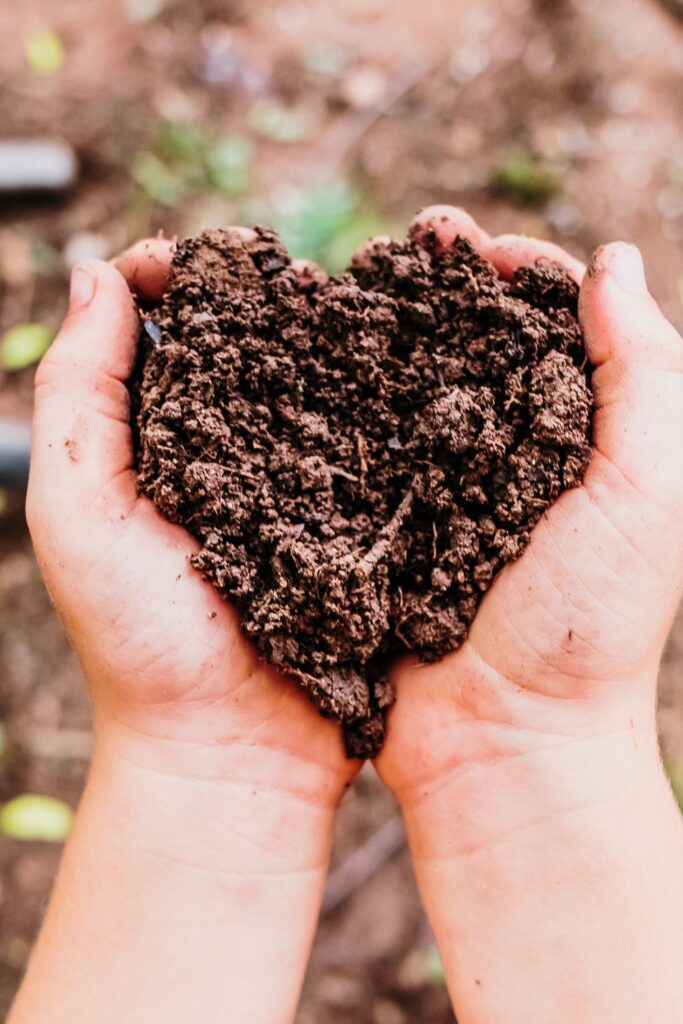
Other Houseplants that Thrive in a Similar Potting Mix
By investing in the essential ingredients for the best soil for spider plants, you’ll find that these versatile components can be the cornerstone of creating an ideal environment for a whole array of plants:
- Pothos (Epipremnum aureum)
- Snake Plant (Sansevieria trifasciata)
- Peace Lily (Spathiphyllum spp.)
- ZZ Plant (Zamioculcas zamiifolia)
- Rubber Plant (Ficus elastica)
- Philodendron (Philodendron spp.)
- Chinese Evergreen (Aglaonema spp.)
- Dracaena (Dracaena spp.)
- Monstera (Monstera deliciosa)
- African Violet (Saintpaulia spp.)
These plants share similar preferences when it comes to soil moisture, drainage, and aeration, making it easier to maintain a happy and healthy indoor garden!

Shelf Life and Longevity of the DIY Soil Mix
The shelf life and longevity of the DIY soil mix for your spider plant are crucial aspects to consider for the overall health of your green companion. Several factors can influence how long the mix remains effective and viable. The quality of the ingredients used plays a significant role in determining the mix’s durability. Using fresh, high-quality components, such as coco coir, perlite, orchid bark, and compost, will ensure a longer shelf life for the soil mix.
Proper preparation is essential to enhance the mix’s longevity. Before mixing the ingredients, make sure they are well-sourced and free from any contaminants or pests. Store the individual components in a cool, dry place to maintain their potency. Additionally, ensure that the container or pot where the fresh soil is stored is clean and sanitized before use to prevent any unwanted pathogens or pests from affecting the soil’s quality.
Regularly inspect the stored soil mix for signs of mold, pests, or any other issues that might compromise its quality. If you notice any problems, discard the mix and prepare a fresh batch to avoid any negative impact on your spider plant’s health. With proper preparation, storage, and vigilance, you can extend the shelf life of your DIY soil mix, providing your spider plant with a nourishing and stable environment for extended periods.
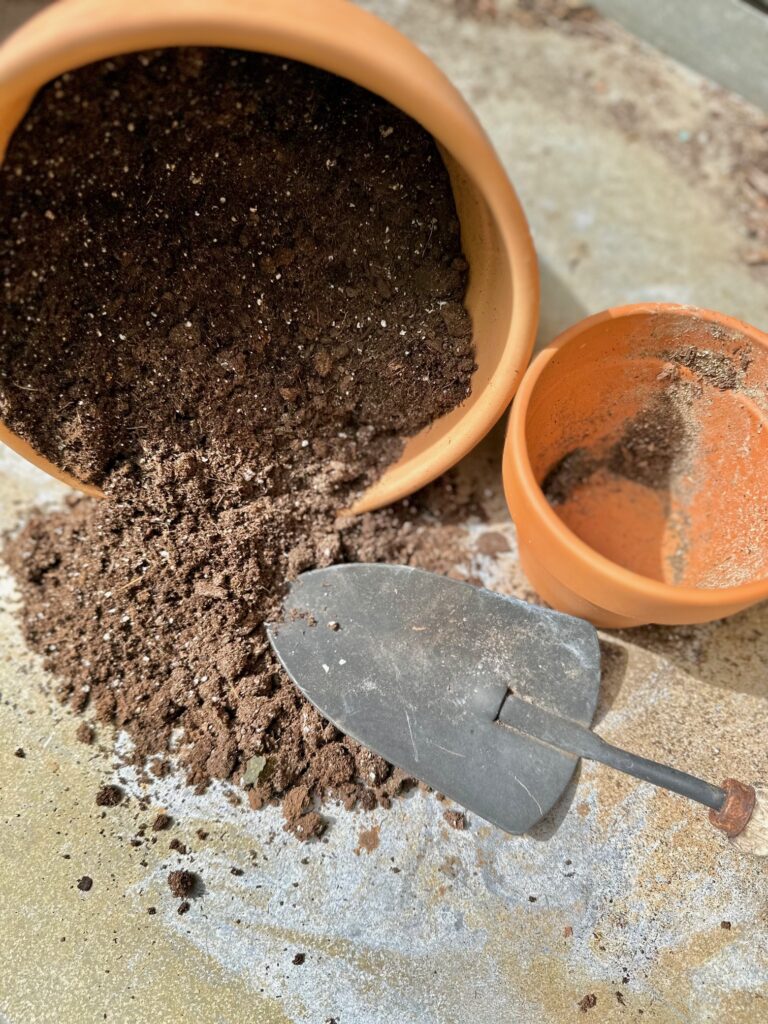
Best Commercial Ready-Made Spider Plant Soil Mix
If you’re not feeling like a potting mix scientist today, don’t worry! There are fantastic commercial indoor potting mix options available that cater to your spider plant’s needs. Let’s explore the top-notch ready-made spider plant soil mixes that take the guesswork out of gardening and deliver the perfect blend straight to your doorstep!
Review of “Spider Plant Imperial Houseplant Potting Soil Mix” by rePotme
The “Spider Plant Imperial Houseplant Potting Soil Mix” by rePotme is a fantastic option for spider plant enthusiasts. This premium commercial mix offers the perfect balance of nutrients, aeration, and drainage, creating an optimal environment for spider plants to thrive. The blend is thoughtfully crafted to meet the specific needs of these green beauties, promoting healthy growth and vibrant foliage. With excellent moisture retention and proper pH levels, this mix simplifies plant care while ensuring exceptional results. Whether you’re a beginner or a seasoned gardener, “Spider Plant Imperial Houseplant Potting Soil Mix” is a reliable choice to support your spider plants’ well-being and add a touch of green elegance to your home.
Review of “Miracle-Gro Moisture Control Potting Mix” for Spider Plants
The “Miracle-Gro Moisture Control Potting Mix” is a reliable and convenient option for spider plant owners. As the name suggests, this mix excels in moisture retention, ensuring that your spider plants stay adequately hydrated without the risk of overwatering. The added moisture control technology helps prevent root rot and other water-related issues, making it an excellent choice for beginners or those with busy schedules. Additionally, the mix contains essential nutrients to support healthy plant growth and vibrant foliage. While it may not be specifically tailored for spider plants, this versatile potting mix provides a well-rounded solution for a variety of houseplants, including your green spider beauties. With “Miracle-Gro Moisture Control Potting Mix,” your spider plants are in good hands, ready to flourish and brighten up any corner of your home.

Glass Open Terrarium with DIY Stand (Including Care and a List of Tiny Plants for Terrariums)
Advantages and Disadvantages of Commercial Soil Mixes
Commercial soil mixes offer both convenience and specific formulations tailored to the needs of different plants, including spider plants. Here are some advantages and disadvantages of using commercial soil mixes:
Advantages:
- Consistency: Commercial mixes are manufactured under controlled conditions, ensuring a consistent blend of nutrients and materials, and promoting balanced growth for your spider plant.
- Time-Saving: Ready-made mixes save time and effort, eliminating the need to gather individual ingredients and mix them yourself.
- Tailored Formulations: Many commercial mixes are specially formulated for specific plant types, like spider plants, providing the ideal environment for optimal growth.
- Pest and Disease Control: Reputable commercial mixes often undergo treatments to minimize the risk of pests and diseases, safeguarding your plant’s health.
- Convenient Packaging: They are available in various quantities, from small bags to larger bulk options, accommodating your gardening needs.
Disadvantages:
- Limited Customization: Commercial mixes may not perfectly match your spider plant’s unique requirements, as they are designed for general use.
- Cost: While convenient, ready-made mixes can be more expensive than creating your own blend from individual components.
- Quality Concerns: Some cheaper commercial mixes may contain lower-quality ingredients or fillers that could negatively impact plant health.
- Environmental Impact: The production and transportation of commercial mixes may contribute to carbon emissions and plastic waste.
- Hidden Ingredients: It’s essential to research the components of commercial mixes to ensure they align with your plant’s specific needs, as not all products are equal.
Consider these factors when choosing whether to use commercial soil mixes or create your own blend, based on what best suits your spider plant’s well-being and your gardening preferences.
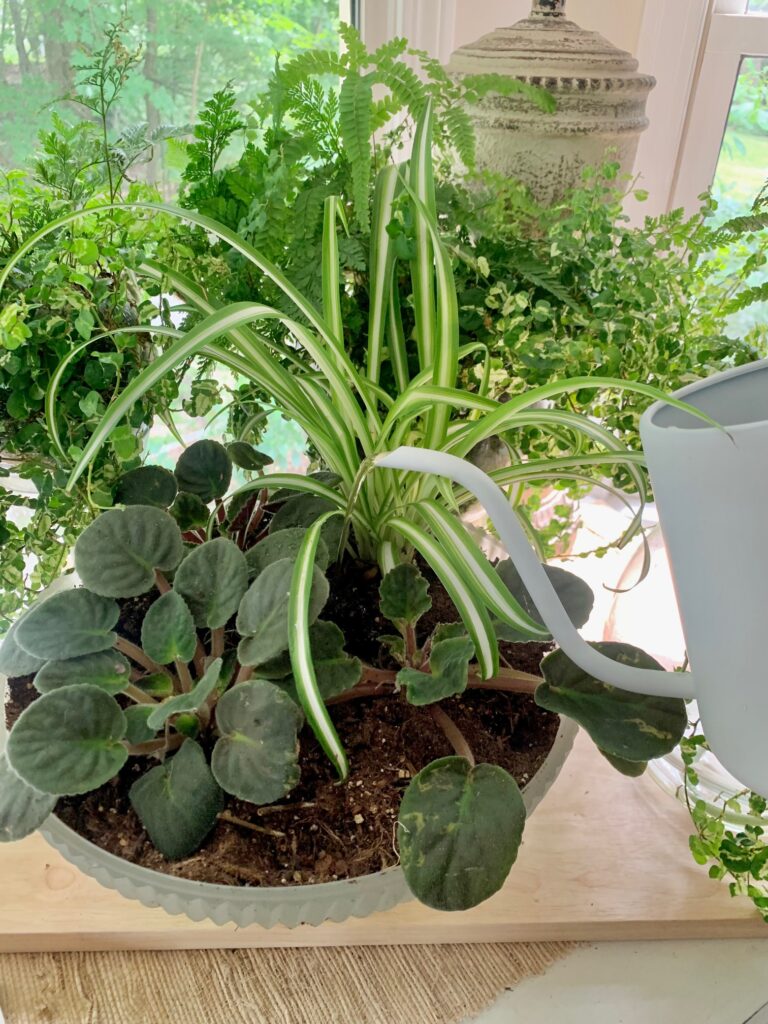
Signs your Spider Plant Needs Better Soil
Ensuring your spider plant is in the right soil is crucial for its well-being, but sometimes, it may not come in the ideal soil from the start. Here are some common problems and telltale signs that your spider plant might need better soil:
- Yellowing leaves: If you notice the leaves of your spider plant turning yellow, it could be a sign of nutrient deficiency or poor drainage in the soil.
- Wilting or drooping: Spider plants that are not getting the right nutrients or are experiencing waterlogged soil may exhibit wilting or drooping leaves.
- Stunted growth: A lack of essential nutrients or compacted soil can lead to stunted growth in your spider plant.
- Root-bound: If you notice roots circling around the bottom of the pot or growing out of the drainage holes, it’s a sign that your spider plant has outgrown its current soil and needs to be repotted.
- Root rot: Excessively moist or poorly draining soil can lead to root rot, which can be identified by dark, mushy roots.
- Foul odor from the soil: Foul smells emanating from the soil could indicate that it lacks proper aeration and drainage, leading to the potential for root rot or other issues.
- Difficulty in absorbing water: If the soil repels water and doesn’t seem to be absorbing moisture well, it might be too compacted or need better drainage.
- Pest infestations: Poor soil conditions can weaken a spider plant, making it more susceptible to pest infestations.
- Lack of new growth: Insufficient nutrients in the soil can result in the lack of new shoots or leaves on your spider plant.
- Overall unhealthy appearance: If your spider plant looks lackluster, shows discoloration, or appears generally unhealthy despite proper care, it could be due to inadequate soil conditions.
It’s essential to pay attention to your spider plant’s appearance and behavior, as these signs can indicate whether the current soil is meeting its needs or if it requires better soil to thrive. It is important to note that the signs mentioned may not solely be indicative of soil issues. Various factors, such as sunlight exposure, pests, potbound conditions, and other environmental factors, can also contribute to these symptoms.

Frequently Asked Questions about The Best Soil for Spider Plants
It’s not recommended to use garden soil for indoor plants like spider plants. Garden soil can be too dense and may not provide the necessary drainage and aeration required for optimal growth. It may also contain pests, diseases, or weed seeds that can harm your spider plant.
While it may be tempting to reuse potting mix, it’s best to start fresh with a new mix for a different spider plant. Reused soil may have depleted nutrients and could harbor pests or diseases that can affect the new plant’s health.
Spider plants should be repotted every 1 to 2 years or when they outgrow their current pot. Signs that indicate it’s time to repot include root-bound growth, stunted development, and watering issues.
Yes, you should use fertilizers in addition to the recommended potting mix for your spider plants. Fertilizing provides essential nutrients that enhance their health and growth. For a DIY fertilizer option, check out my blog post: Indoor Plant Fertilizers You Can Make at Home (Feed Your Plants the Natural Way)
Spider plants do not particularly like coffee grounds. While coffee grounds are often touted as a natural fertilizer and soil amendment, they are not the best choice for spider plants. Coffee grounds are acidic, and spider plants prefer slightly acidic soil to neutral soil pH levels (around 6.0 to 7.5). Adding coffee grounds to the soil can lower the pH too much and create an unfavorable environment for the plant. For a list of plants that do like coffee grounds visit my Which Indoor Plants Like Coffee Grounds (and how I use my Keurig to make fertilizer) post.
While the recommended ingredients provide the best soil mix for spider plants, you can create a basic mix using a combination of peat moss, perlite, and regular potting mix. However, it may not provide all the benefits of the complete recommended mix.
Signs of a spider plant not thriving in its soil include yellowing leaves, wilting, stunted growth, or a generally unhealthy appearance. These symptoms may indicate issues with drainage, nutrient deficiency, or improper pH balance in the soil.
It’s best not to mix fertilizer directly into the potting mix while repotting. Instead, add fertilizer as a separate step after repotting, following the recommended dosage to avoid over-fertilization.
Absolutely! Spider plants can thrive in a self-watering planter, which provides a consistent and controlled water supply. For more details on how self-watering planters can benefit your spider plants, check out my blog post on self-watering planters. Your spider plant will love the convenience and optimal moisture levels these planters offer!
Yes, you can use cactus or succulent soil for your spider plants. Both cactus and succulent soil mixes provide good drainage, which is beneficial for spider plants’ health and growth. However, it’s essential to ensure that the mix also includes nutrient-rich components suitable for spider plants’ specific needs.

The right soil mix is essential for the optimal growth and health of your spider plants. Creating well-balanced, nutrient-rich soil with good drainage and aeration properties will provide your green babies with the perfect home to thrive. Whether you choose to craft your own potting mix or opt for a commercial blend specifically formulated for spider plants, the key is to ensure that it’s the best soil for spider plants and meets the plant’s unique requirements.
Remember that a spider plant, often called a ribbon plant with its gracefully arching leaves and charming spiderettes, is a favorite among houseplant enthusiasts for a reason. Their air-purifying abilities, easy care routine, and forgiving nature make them an excellent choice for any green-loving home.
Thanks for visiting the blog today for Unearthing the Best Soil for Spider Plants: The Ultimate Guide. Stay tuned for parts 2 and 3 of our series, where we’ll delve into repotting tips and best watering practices for your spider plants. By taking the time to understand and meet your spider plant’s soil needs, you’ll provide them with the nurturing environment they crave, ensuring they flourish and bring elegance and joy to your living spaces.
Happy gardening friends!



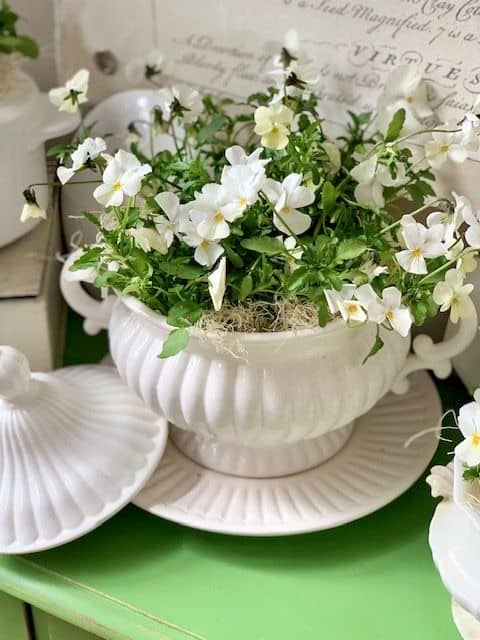



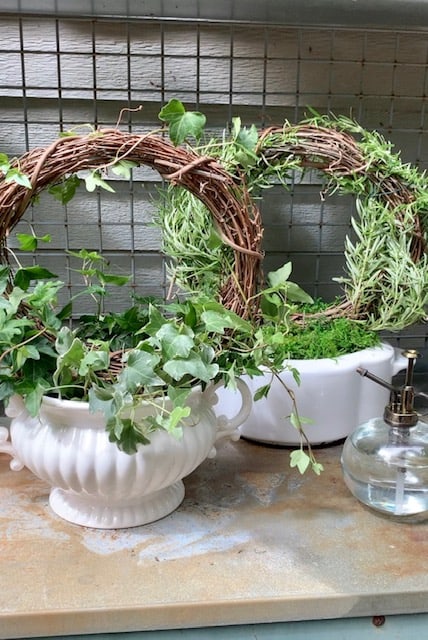

Your pop up is so big it is behind the ads on your site and therefore there is no way for me to “x” out of it. Most people may not know to just click on the screen (for desktop) to make it go away. Just FYI. This was a very thorough, well-written article on the subject. I also truly appreciate your writing style.
Thank you for letting me know! I’ll adjust it!